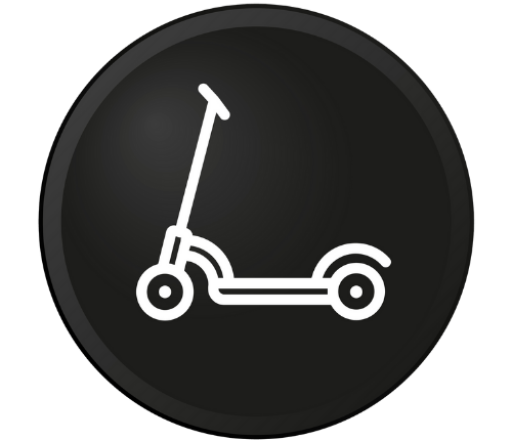Lightweight city bicycles are becoming increasingly popular among urban commuters for their ease of use, efficiency, and convenience.
Designed with portability and agility in mind, these bikes offer an excellent solution for navigating busy city streets, commuting to work, or enjoying a leisurely ride around town.
This article explores the benefits, features, and tips for choosing the perfect lightweight city bicycle.
Why Choose a Lightweight City Bicycle?
- Ease of Handling:
- Maneuverability: Lightweight bikes are easier to maneuver through crowded streets and tight spaces, making them ideal for urban environments.
- Portability: Their reduced weight makes them easier to carry up stairs, onto public transportation, or into buildings, adding convenience to your daily commute.
- Enhanced Performance:
- Speed and Agility: With less weight to propel, you can achieve higher speeds with less effort, making your rides faster and more efficient.
- Climbing Efficiency: Lightweight bikes make climbing hills and inclines easier, reducing the strain on your legs and improving your overall riding experience.
- Energy Efficiency:
- Less Fatigue: A lighter bike requires less energy to ride, allowing you to travel longer distances with less fatigue.
- Better Acceleration: Quick acceleration is easier with a lightweight bike, making it perfect for stop-and-go city traffic.
- Stylish Design:
- Modern Aesthetics: Lightweight city bikes often feature sleek, minimalist designs that cater to contemporary tastes.
- Customizability: Many lightweight models offer a range of colors and styles, allowing you to choose a bike that matches your personal style.
Key Features of Lightweight City Bicycles
- Frame Material:
- Aluminum: Common in lightweight bikes, aluminum is durable and resistant to rust while being lighter than steel.
- Carbon Fiber: Even lighter and stronger than aluminum, carbon fiber frames are often found on higher-end models, offering superior performance and comfort.
- Compact Design:
- Foldable Options: Some lightweight city bikes feature foldable designs, making them incredibly portable and easy to store in small apartments or office spaces.
- Minimalist Construction: Emphasis on essential components reduces weight while maintaining functionality and reliability.
- Efficient Gearing:
- Single-Speed: Ideal for flat urban areas, single-speed bikes are lighter and simpler to maintain.
- Internal Hub Gears: Offer multiple speeds while keeping the drivetrain enclosed and protected, reducing maintenance and adding to the bike’s sleek look.
- Braking Systems:
- V-Brakes: Lightweight and effective, V-brakes are a common choice for lightweight city bikes.
- Disc Brakes: Provide superior stopping power, especially in wet conditions, and are increasingly found on higher-end lightweight models.
- Comfort Features:
- Ergonomic Saddles: Comfortable seating designed for longer rides.
- Adjustable Handlebars: Allow you to customize the fit for better comfort and control.
Choosing the Right Lightweight City Bicycle
- Identify Your Needs:
- Commuting Distance: Consider the distance you will be traveling daily and choose a bike with appropriate features, such as gearing and comfort.
- Storage and Portability: If you need to carry your bike frequently, opt for a foldable model or one with a particularly lightweight frame.
- Test Ride:
- Comfort and Fit: Ensure the bike fits well and is comfortable to ride. Pay attention to the saddle, handlebar height, and overall ergonomics.
- Handling: Check how the bike handles turns, stops, and accelerates to ensure it meets your performance expectations.
- Budget:
- Entry-Level Models: Suitable for casual riders or short commutes, these bikes offer basic features at an affordable price.
- Mid-Range Models: Provide a balance of quality and affordability, with better components and improved performance.
- High-End Models: Feature advanced materials like carbon fiber, high-quality components, and often include additional features such as disc brakes and internal hub gears.
Maintenance Tips for Lightweight City Bicycles
- Regular Cleaning:
- Frame and Components: Keep your bike clean to prevent rust and wear. Use a mild detergent and a soft brush for cleaning.
- Chain and Gears: Degrease and lubricate regularly to ensure smooth operation.
- Tire Care:
- Pressure Checks: Maintain proper tire pressure to ensure optimal performance and reduce the risk of flats.
- Inspect for Wear: Regularly check tires for cuts, punctures, and tread wear.
- Brake Maintenance:
- Check Pads: Ensure brake pads are not worn down and replace them when necessary.
- Adjust Tension: Keep brake cables properly tensioned for effective braking.
- Gear Adjustments:
- Smooth Shifting: Regularly adjust the derailleurs or internal hub gears to ensure precise and smooth gear changes.
- Clean and Lubricate: Keep the drivetrain clean and well-lubricated to prolong its lifespan.
Conclusion
Lightweight city bicycles offer a perfect blend of performance, convenience, and style, making them an excellent choice for urban commuters.
With their ease of handling, enhanced performance, and energy efficiency, these bikes can significantly improve your daily commute and overall riding experience.
Embrace the advantages of a lightweight city bike and enjoy the freedom and efficiency it brings to your urban adventures.



